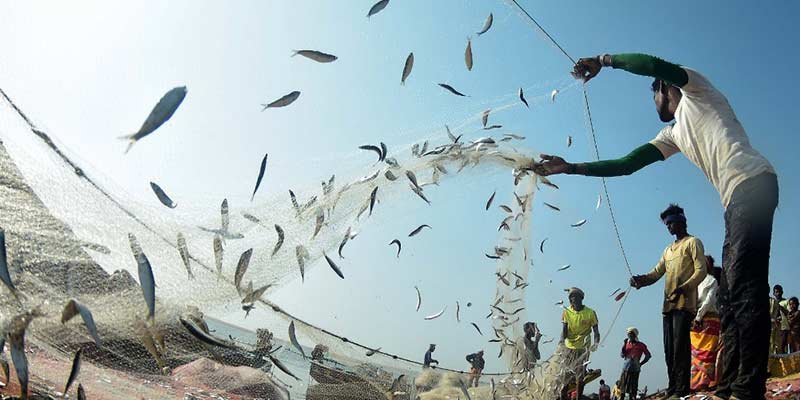- India
- Nov 17
Govt launches fisheries business incubator in Gurugram
• Union Minister Parshottam Rupala launched the country’s first-of-its kind fisheries business incubator in Gurugram at a cost of Rs 3.23 crore to promote startups in this sector.
• The business incubator, known as LINAC- NCDC Fisheries Business Incubation Centre (LIFIC), in Gurugram is set up to nurture fisheries startups under real market-led conditions.
• The incubation unit will provide handholding such as training, converting entrepreneurial ideas into business models and doling out seed money to the new as well as existing business entrepreneurs.
• To begin with, the National Cooperative Development Corporation (NCDC), an implementing agency for the LIFIC, has identified the first batch of 10 incubatees from Bihar, Himachal Pradesh, Gujarat and Maharashtra.
• Out of them, six are from newly-created Fish Farmers Producer Organisations with the support of the financial grant under the Pradhan Mantri Matsya Sampada Yojana (PMMSY).
Fisheries sector in India
• Fisheries and aquaculture are an important source of food, nutrition, employment and income in India. The sector provides livelihood to more than 20 million fishermen and fish farmers at the primary level and twice the number along the value chain.
• Overall, there are around 30,000 cooperatives in the fisheries sector.
• Fish being an affordable and rich source of animal protein, is one of the healthiest options to mitigate hunger and malnutrition.
Pradhan Mantri Matsya Sampada Yojana (PMMSY)
• It is a flagship scheme for focused and sustainable development of fisheries sector in the country with an estimated investment of Rs 20,050 crore for its implementation during a period of five years from FY 2020-21 to FY 2024-25 in all states/Union Territories, as a part of Atmanirbhar Bharat Package.
• The investment of Rs 20,050 crore under PMMSY is the highest ever in the fisheries sector. Out of this, an investment of about Rs 12,340 crore is proposed for beneficiary-oriented activities in marine, inland fisheries and aquaculture and about Rs 7,710 crore investment for fisheries infrastructure.
• PMMSY is designed to address critical gaps in the fisheries value chain from fish production, productivity and quality to technology, post-harvest infrastructure and marketing. It aims to modernise and strengthen the value chain, enhance traceability and establish a robust fisheries management framework while simultaneously ensuring the socio-economic welfare of fishers and fish farmers.
• The PMMSY will be implemented as an umbrella scheme with two separate components as central sector scheme and centrally sponsored scheme. The centrally sponsored scheme component is further segregated into non-beneficiary oriented and beneficiary orientated sub-components/activities under the following three broad heads:
a) Enhancement of production and productivity
b) Infrastructure and post-harvest management
c) Fisheries management and regulatory framework.
Anticipated outcomes on account of implementation of PMMSY are:
a) The fish production is likely to be enhanced from 13.75 million metric tons (2018-19) to 22 million metric tons by 2024-25.
b) A sustained average annual growth of about 9 per cent in fish production is expected.
c) An increase in the contribution of GVA of fisheries sector to the agriculture GVA from 7.28 per cent in 2018-19 to about 9 per cent by 2024-25.
d) Double export earnings from the present Rs.46,589 crore (2018-19) to about Rs 100,000 crore by 2024-25.
e) Enhancement of productivity in aquaculture from the present national average of 3 tonnes to about 5 tonnes per hectare.
f) Reduction of post-harvest losses from the reported 20-25 per cent to about 10 per cent.
g) Doubling of incomes of fishers and fish farmers.
h) Generation of about 15 lakh direct gainful employment opportunities and thrice the number as indirect employment opportunities along the supply and value chain.
i) Enhancement of the domestic fish consumption from about 5 kg to about 12 kg per capita.
Manorama Yearbook app is now available on Google Play Store and iOS App Store


